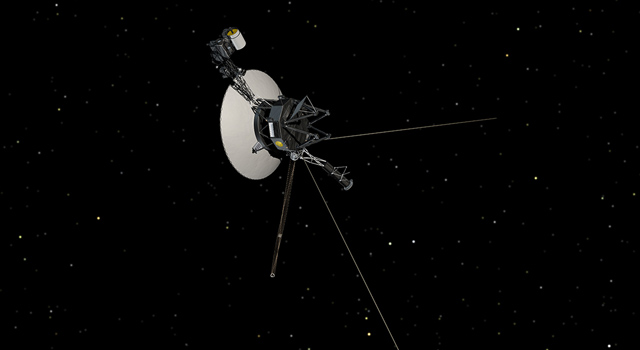News | July 7, 1989
Voyager 2 Discovers New Neptune Moon

A new moon has been discovered orbiting Neptune, scientists on the Voyager Project at NASA's Jet Propulsion Laboratory (JPL), Pasadena, Calif., announced today.
The moon's discovery was confirmed Wednesday, July 5, when it was located in images returned from the Voyager 2 spacecraft enroute to Neptune. Temporarily designated 1989 N1, the new moon was initially seen in Voyager 2 images transmitted to Earth in mid-June. Later images showing the small body in its predicted orbit confirmed its existence.
Dr. Stephen P. Synnott, Voyager imaging team scientist at JPL, found the small, bright smudge in Voyager pictures that led to the moon's discovery. According to Synnott, the new Neptunian satellite could range in diameter from 200 to 600 kilometers (about 125 to 400 miles) and orbits in very nearly circular and equatorial orbit about 92,700 kilometers (about 57,600 miles) from the planet's cloud tops (or about 117,500 kilometers (73,000 miles) from the planet's center).
At this point, the moon is too indistinct to appear in photographic prints made from the Voyager images. Pictures taken in coming weeks will show the moon more clearly.
1989 N1 cannot be seen from Earth because the moon is so close to Neptune that the brightness of the planet itself masks the tiny point of light. Voyager 2 will continue to study the moon and conduct searches for others as it approaches the planet.
Neptune has two other known moons: Triton, discovered in 1846, and Nereid, discovered in 1949. Triton is between 2,500 and 4,000 kilometers (1,500 to 2,500 miles) in diameter; Nereid probably is somewhere between 300 and 1,100 kilometers (200 to 700 miles) in diameter.
Voyager 2 is now 45 million miles away from Neptune and will make close pass of the planet on Aug. 24, 1989. The spacecraft was launched in 1977 and flew past Jupiter in 1979, Saturn in 1981 and Uranus in 1986. The Neptune encounter will be the final planetary flyby of the Voyager mission, which also included Jupiter and Saturn flybys conducted by twin spacecraft, Voyager 1.
The Voyager mission is managed by JPL for NASA's Office of Space Science and Applications.
